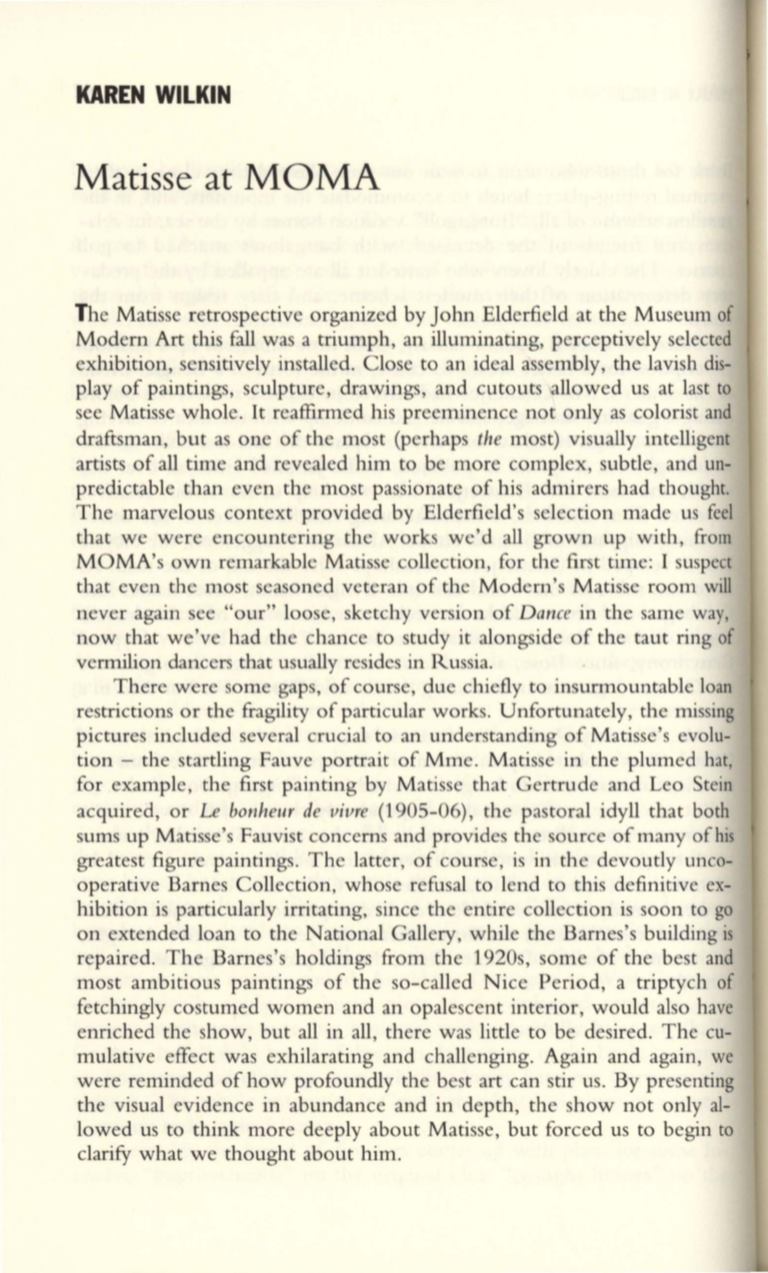
KAREN WILKIN
Matisse at MOMA
The
Matisse retrospective orgaruzed by John Elderfield at the Museum of
Modern Art this fall was a triumph, an illuminating, perceptively selected
exhibition, sensitively installed. Close to an ideal assembly, the lavish dis–
play of paintings, sculpture, drawings, and cutouts allowed us at last to
see Matisse whole. It reaffirmed his preeminence not only as colorist and
draftsman, but as one of the most (perhaps
the
most) visually intelligent
artists of all time and revealed him to be more complex, subtle, and un–
predictable than even the most passionate of his admirers had thought.
The marvelous context provided by Elderfield's selection made us feel
that we were encountering the works we'd all grown up with, from
MOMA's own remarkable Matisse collection, for the first time: I suspect
that even the most seasoned veteran of the Modern's Matisse room will
never again see "our" loose, sketchy version of
Dance
in the same way,
now that we've had the chance to study it alongside of the taut ring of
vermilion dancers that usually resides in Russia.
There were some gaps, of course, due chiefly to insurmountable loan
restrictions or the fragility of particular works. Unfortunately, the missing
pictures included several crucial to an understanding of Matisse's evolu–
tion - the startling Fauve portrait of Mme. Matisse in the plumed hat,
for example, the first painting by Matisse that Gertrude and Leo Stein
acquired, or
Le
bonheur de vivre
(1905-06), the pa toral idyll that both
sums up Matisse's Fauvist concerns and provides the source of many of his
greatest figure paintings. The latter, of course, is in the devoutly unco–
operative Barnes Collection, whose refusal to lend to this definitive ex–
hibition is particularly irritating, since the entire collection is soon to go
on extended loan to the National Gallery, while the Barnes's building is
repaired. The Barnes's holdings from the 1920s, some of the best and
most ambitious paintings of the so-called Nice Period, a triptych of
fetchingly costumed women and an opalescent interior, would also have
enriched the show, but all in all, there was little to be desired. The cu–
mulative effect was exhilarating and challenging. Again and again, we
were reminded of how profoundly the best art can stir us. By presenting
the visual evidence in abundance and in depth, the show not only
al–
lowed us to think more deeply about Matisse, but forced us to begin to
clarify what we thought about him.


